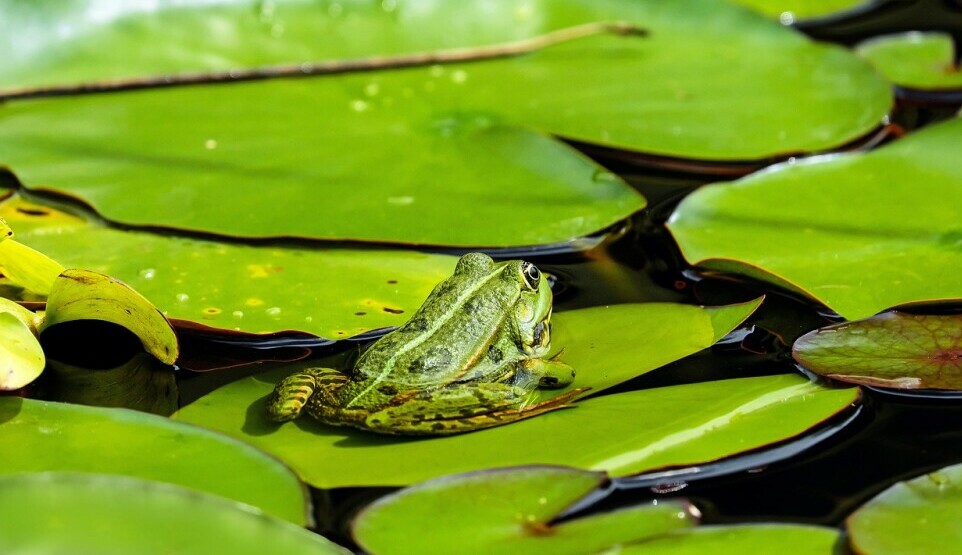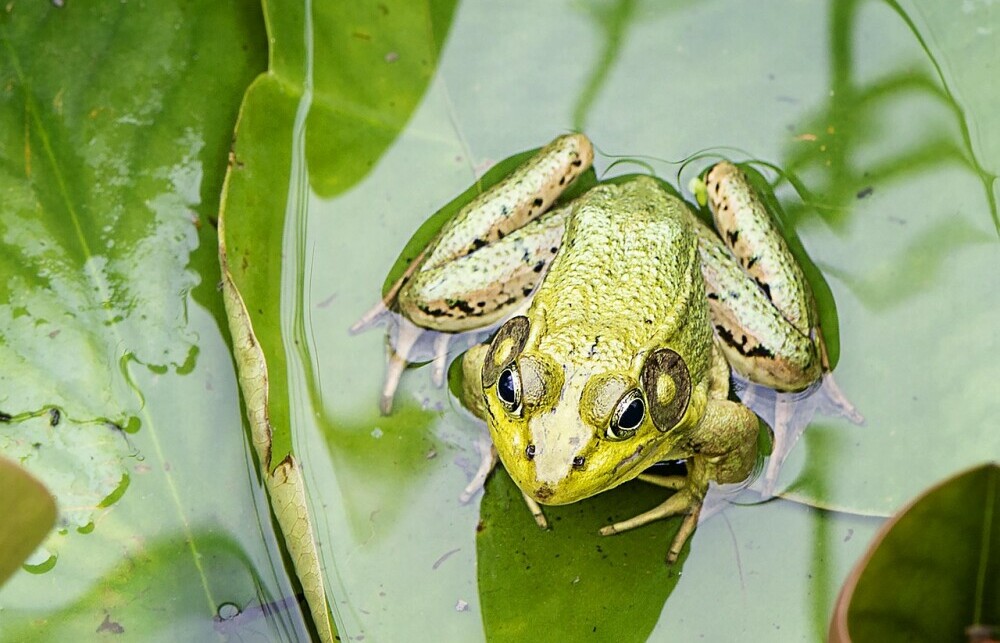Have you ever noticed how some frogs seem to blend almost magically into their surroundings? Well, this isn’t just about having a natural knack for hide and seek, it’s also about survival. Frogs are remarkable creatures with a range of adaptations that allow them to thrive in diverse environments. The ability to change color is one such incredible adaptability that has fascinated scientists and nature lovers alike.

The concept of camouflage is not just a cool trick; it’s a vital survival mechanism. Frogs use color change to hide from predators, sneak up on prey, and even communicate with other frogs. This introduction sets the stage for exploring the underlying phenomena driving these changes, their triggers, and their purposes.
Today, I’m going to be talking about why frogs change color. We’ll start by unpacking the science behind these changes, laying a foundation for understanding the broader implications for frog populations around the world. From camouflage to communication, it’s a topic that touches on biology, ecology, and environmental science in equal measure.
The Science of Color Change in Frogs
I’m going to take you into the heart of what makes frogs such remarkable color-changers. It all boils down to specialized cells known as chromatophores. These are the cells that enable frogs, and indeed various other animals, to change their skin color in response to different stimuli. In frogs, chromatophores are layered beneath their skin, and each layer contains different pigments contributing to the overall color we observe.
Now, it isn’t just about having these cells. Hormones play a critical role in this process. When a frog encounters changes in its environment – like shifts in light or temperature – its endocrine system releases hormones that cause the chromatophores to expand or contract. And it’s this action that allows for the temporary or long-term color change we often see in these amphibians.
You’re going to find out that not all color changes are created equal. Certainly, temperature fluctuations have a prompt effect, but then there are the more deliberate, permanent shifts in color. These occur during developmental stages as frogs progress from tadpoles to adulthood, or as a seasonal adaptation. Fascinating, isn’t it? Now, this isn’t just a neat trick; it’s a multifaceted process involving biological, chemical, and physical principles, each playing a synchronized role in the survival of these species.
So this brings the question: What kicks this off? What are the exact environmental or physiological factors that compel a frog to switch hues? Let’s jump to the next section where I’m going to delve into these factors one by one. We’ll explore how a variety of triggers such as light, temperature, and even a frog’s emotional state, contribute to the color-changing phenomenon.

Factors Influencing Frogs’ Color Change
I decided to explore the various factors that cause frogs to experience a color change. It’s not just a fancy trick; these changes are often essential for the survival of frogs in the wild. Let’s start with temperature. You’re going to find out about how a rise or drop in the thermometer readings can make some frog species switch shades. They’re quite sensitive to heat and cold, and they tweak their external appearance accordingly to regulate their body temperature.
Next, let’s talk about light exposure. Just like how we might put on sunglasses on a sunny day, frogs can modify their color to protect themselves against harsh sunlight or to enhance their absorption of warmth during cooler periods. Different lighting conditions can induce darkening or lightening of their skin, depending on what they need at that moment.
Mood changes in frogs can also be reflected in their color. You may be surprised to learn that stress or aggression can bring about a darker tone in certain frogs, while a relaxed state might result in a lighter color. This isn’t just about looking different, it’s also about sending signals to other frogs in the area.
Lastly, the immediate environment plays a significant role in a frog’s color variation. Being in a dense forest with ample shade and greenery means there’s a lot of opportunity to blend in, while desert-dwelling species might have different coloration challenges altogether. Whether avoiding a predator or trying to outdo a rival during mating season, their habitat dictates their hue strategy.
Camouflage: A Closer Look at Frogs’ Survival Strategy
You’re going to find out about the clever ways frogs stay off the predator’s menu. A key survival tool for many frog species is their ability to camouflage. This isn’t just about blending in; it’s about the remarkable ability to become nearly invisible in their natural habitats.
Imagine walking through a dense forest or a lush jungle. You might not notice, but there’s a good chance a frog is sitting right there, its colors and patterns mirroring leaves and branches. This camouflage is crucial for concealment from predators like birds, snakes, and even other larger frogs.
In my opinion, frogs are masters of disguise. Some species can mimic textures and even the gloss of wet leaves, helping them to vanish from sight. The ability of frogs to change their skin colors to match their environment is a survival tactic honed by generations of evolution.
Amphibians like the gray tree frog or the Pacific tree frog can adjust their skin color to match their surroundings, effectively evading predators. For some, this change can occur quite rapidly, taking only a few minutes or hours.
However, it’s not only about escaping predators. Camouflage also enables frogs to be effective predators themselves. A well-disguised frog can sit unnoticed as it waits for insects or smaller creatures to wander by.
That’s the strategy I like to leverage when discussing the role of camouflage. By examining these remarkable adaptations, it gives us a clearer picture of nature’s complexities and the wonders of evolutionary biology. Let’s remember, though, that camouflage is just one piece of a larger ecological puzzle.
Exploring Myths: Can Frogs Change Color at Will?
I’m going to bust some common myths about our amphibian friends, especially regarding their seemingly magical color changes. It’s easy to imagine frogs consciously flipping a switch to match their surroundings, isn’t it? Well, guess what? They are not miniature chameleons with this ability.
Most of the time, color changes in frogs are involuntary, driven by external factors such as temperature, light, and their immediate environment. I want you to think of a frog’s skin as a complex screen that reacts to various signals, not a canvas they can repaint at a whim.
You might have heard stories about frogs changing their color to express their emotions, much like a mood ring. While it’s true that stress and courtship can affect a frog’s color, it’s not a voluntary shift. They can’t decide to turn a vibrant green to attract a mate or go brown to sulk after a rough day in the pond.
To set the record straight, in my opinion, the capacity for color change in frogs is more about survival and less about expressive personal makeovers. This isn’t just about survival, though; it’s a glimpse into the complex and adaptive lives of frogs that we’re still striving to fully understand.
If you want to dive into how these involuntary changes matter, stick around for the next section. We’re going to touch on why knowing the ins and outs of these color transformations is crucial for conservation efforts.
Conservation Implications of Color Change
Understanding the color-changing mechanisms of frogs isn’t just about unraveling an intriguing natural phenomenon; it’s directly linked to their survival. Many frog species are indicators of environmental health, meaning changes in their populations can signify broader ecosystem issues.
The ability of frogs to change color reflects their overall well-being and the condition of their habitat. When environments are polluted or altered, it can disrupt these delicate processes. By studying color change, conservationists can identify and mitigate these threats.
Moreover, conservation efforts benefit from this knowledge, as it aids in creating strategies that ensure the frogs’ habitat is preserved or restored. This is especially critical given the rapid changes in climate and habitat loss due to human activities.
Finally, public education plays a crucial role in frog conservation. By sharing insights into the fascinating adaptability of frogs, such as their color change, we can foster a greater appreciation for these creatures and the urgent need to protect them.
I really hope that you’ve gained a deeper understanding of why frogs change color and the bigger picture it paints for their conservation. Remember, the survival of frogs is intimately tied to the health of our planet, and every effort we make in preserving their world safeguards ours as well.
